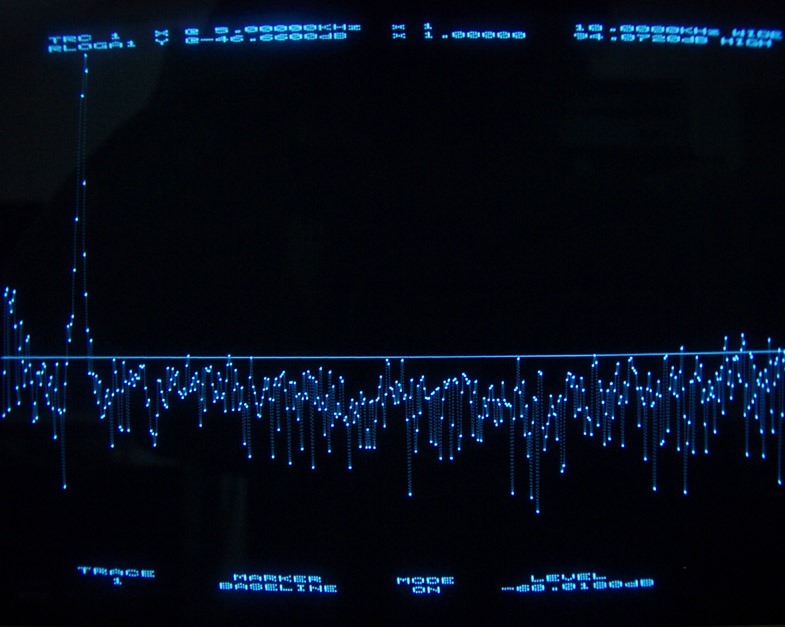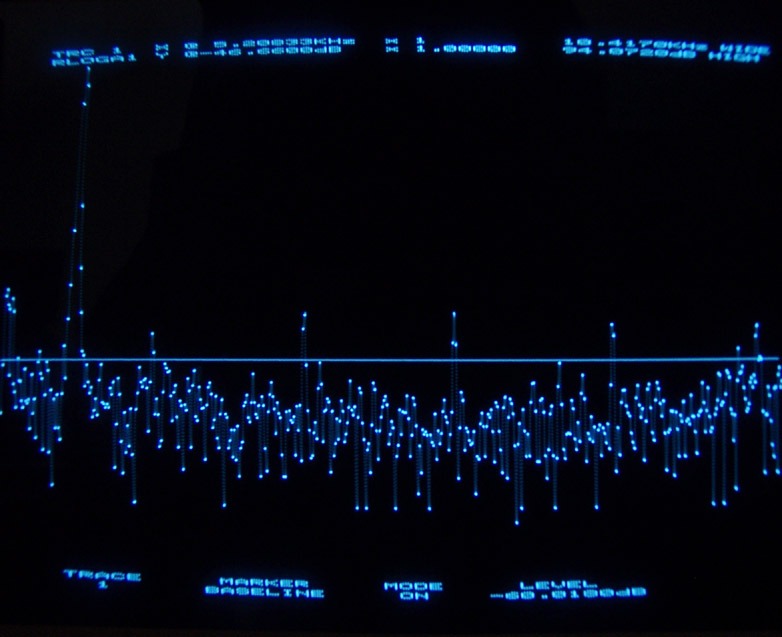Thanks, it is interesting, I will read more about it. I am also interested in your results (screenshots) with a DSP. I put the WAV files here, feel free to use them:
http://tube.fw.hu/lintest.zip
http://tube.fw.hu/lintest.zip
I dont have it, but its up to you :
http://www.anagramtech.com/shop/
Checked, you can get 16/ 192khz out of it (requirerment of 1541)
http://www.anagramtech.com/shop/
Checked, you can get 16/ 192khz out of it (requirerment of 1541)
Structured audio quadratic interpolation
The saa7220a/b behave different and also the tda1541/a.
That gives a total of 6 combinations including non os tda1541/a
Pick your poison...
The saa7220a/b behave different and also the tda1541/a.
That gives a total of 6 combinations including non os tda1541/a
Pick your poison...
I bypassed the SAA7220B/P and now all tracks look very nice. The problem was caused by that spunky digital filter!
Still, the low level linearity is better with the SAA.
http://www.diyaudio.com/forums/showthread.php?s=&threadid=49778&perpage=10&highlight=&pagenumber=8


http://www.diyaudio.com/forums/showthread.php?s=&threadid=49778&perpage=10&highlight=&pagenumber=8
A very good TDA1541A S1 with oversampling filter SAA7220B in a Philips CD960, no averaging = original noise floor.
The horizontal line marks -60dB relative to the input signal.

Now the SAA7220B bypassed, no oversampling.
There is K2, K4, K6, K8, K10, each 10dB above noisefloor.
You hear it...

Track_01 to Track_10
Track_01 to Track_10
Track_01 to Track_10
Attachments
-
Track_01.zip160.7 KB · Views: 491
-
Track_02.zip160.7 KB · Views: 380
-
Track_03.zip160.7 KB · Views: 355
-
Track_04.zip160.7 KB · Views: 340
-
Track_05.zip160.7 KB · Views: 365
-
Track_10.zip160.7 KB · Views: 343
-
Track_09.zip160.7 KB · Views: 358
-
Track_08.zip160.7 KB · Views: 355
-
Track_07.zip160.7 KB · Views: 363
-
Track_06.zip160.7 KB · Views: 360
Track_11 to Track_15
Track_11 to Track_15
You need to extract all ZIP files to 15 WAV files and write an audio CD from it.
Track_11 to Track_15
You need to extract all ZIP files to 15 WAV files and write an audio CD from it.
Attachments
This is interesting! Just the other day, my friend and I were trying to figure out how to write a square wave to a cd, so that the output of the dec can be checked out on a scope.
CD can't do square waves.
Basically they can't do fast rise times, nor fast fall times.
Whereas vinyl can do a very good approximation of a square wave.
Who says digital is perfect, for ever?
Basically they can't do fast rise times, nor fast fall times.
Whereas vinyl can do a very good approximation of a square wave.
Who says digital is perfect, for ever?
You can write a square wave to CD data. It just doesn't correspond to any real-life signal presented at the input to the anti-aliasing filter, so whatever it gives you at the output of the DAC also does not correspond to any real-life signal. Might be useful in debugging a DAC (e.g. ground bounce), but I would guess poorly correlated with sound quality.
With this signal, you can adjust MSB trimm pot of PCM56P or so on.
THD performance , especially small amplitude may be improve,
so that you may be able to "listen" difference.
I adjusted PCM58P's MSB to 4SB with 990.5Hz -60dB signal with properly DC offseted.
This DAC sounds good.
You can roughly measure THD with your PC's sound card and RMAA or similar software.
Then trim the pot to the lowest distortion point.
THD performance , especially small amplitude may be improve,
so that you may be able to "listen" difference.
I adjusted PCM58P's MSB to 4SB with 990.5Hz -60dB signal with properly DC offseted.
This DAC sounds good.
You can roughly measure THD with your PC's sound card and RMAA or similar software.
Then trim the pot to the lowest distortion point.
CD can't do square waves.
Basically they can't do fast rise times, nor fast fall times.
Whereas vinyl can do a very good approximation of a square wave.
Who says digital is perfect, for ever?
vinyl only has extened frequency response if you accept low power bandwidth signals as your test basis
few records have ever been cut with >3 kHz power bandwidth, only the most exotic carts can track 5 kHz "full scale" Sine waves - and then see what happens at the innermost grooves on classic LP
try 19 kHz + 20 kHz full scale sine IMD test - no record, cart can do it
so there are different "edges" to the frequency/resolution/amplitude/dynamic range boxes between CD and Vinyl - different test signals can show up each format's strength or weaknesses
of course CD only wins on full coverage of audible frequency range with orders of magnitude better frequency flatness, distortion, dynamic range
cheap, portable digital playback "bad" 10ns jitter is nearly a million times smaller than record player, vinyl disc warp and centering wow, flutter "FM" distortion causing time errors; a thousand times better than cart/stylus/groove geometric tracing errors expressed as time modulations
Last edited:
vinyl only has extened frequency response if you accept low power bandwidth signals as your test basis
few records have ever been cut with >3 kHz power bandwidth, only the most exotic carts can track 5 kHz "full scale" Sine waves - and then see what happens at the innermost grooves on classic LP
try 19 kHz + 20 kHz full scale sine IMD test - no record, cart can do it
so there are different "edges" to the frequency/resolution/amplitude/dynamic range boxes between CD and Vinyl - different test signals can show up each format's strength or weaknesses
of course CD only wins on full coverage of audible frequency range with orders of magnitude better frequency flatness, distortion, dynamic range
cheap, portable digital playback "bad" 10ns jitter is nearly a million times smaller than record player, vinyl disc warp and centering wow, flutter "FM" distortion causing time errors; a thousand times better than cart/stylus/groove geometric tracing errors expressed as time modulations
What he says ^^^^^^^^^^^ 😉
- Home
- Source & Line
- Digital Source
- DAC linearity test CD